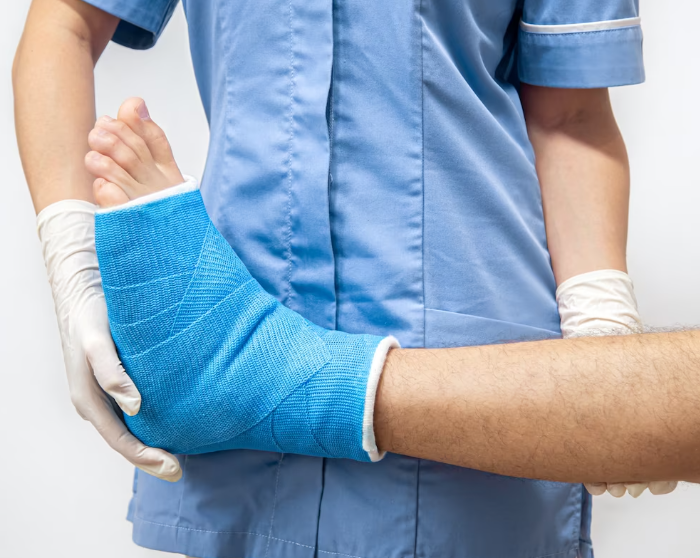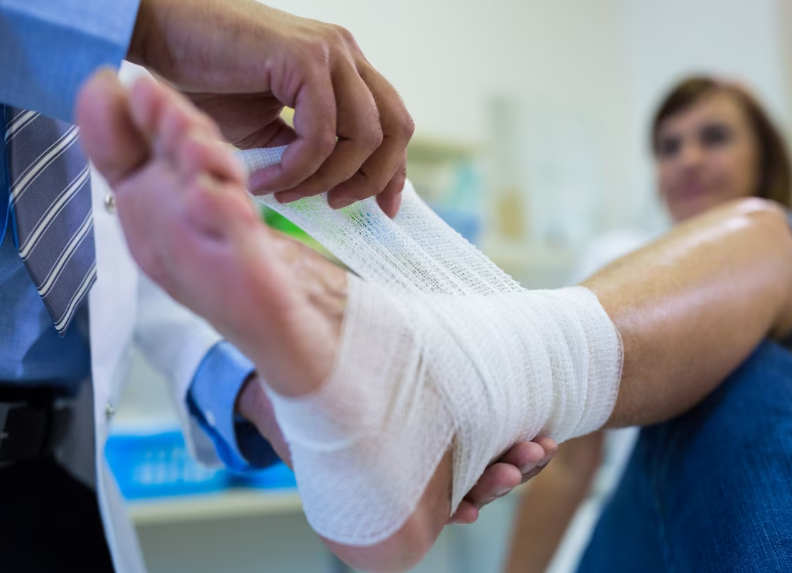
Have you ever thought about what it would be like to experience spontaneous pain or excess pain whose intensity exceeds that of “standard” pain? Probably not... Approximately 3-4% of the world population, including about 200,000 US citizens, is familiar with that feeling.
There is a condition known as Complex Regional Pain Syndrome (CRPS), that is rather rare, but that can also greatly affect the lives of the individuals that deal with it. Today we will not only explore the cause, and the symptoms of this condition but will also provide information on how a service dog can help a person with this condition.
CRPS - Definition
This term is used to describe a condition of prolonged and excess pain and inflammation as a result of a limb injury. This disease can manifest in two ways- as acute pain in the short-term, and as chronic pain in the long term, which usually encompasses a period of 6 months or more.
Usually, individuals suffering from this condition, experience abrupt acute pain that can be provoked even by the slightest stimuli. Changes in the body temperature, skin coloration, and swelling in the injured area are common symptoms of this condition.
The good news is that many people manage to recover from this condition, or at least recover quite well. However, others may have their lives greatly affected by this condition. This is especially valid for individuals who deal with the chronic form of CRPS.
Unfortunately, there still isn’t a treatment available that can help individuals recover from this disease quickly. This is due to the fact that symptoms may be different from person to person and that they can gradually change.

CRPS - Cause
Improper functioning (also due to damage) of the peripheral nervous system and the small peripheral C-type nerve fibers in particular is considered the main cause of CRPS. The nerve fibers are responsible for transferring nerve signals from the brain and spinal cord to the other body areas.
If the signals between the neurons are damaged (there is nerve firing), inflammation can occur as a natural response of the body, to stimulate rest and healing.
Typically, individuals who suffer from CRPS have experienced injury or trauma to their arm or leg. Due to this injury/trauma, the nerve fibers in this body part that lack myelin (a protective layer around the nerves) are affected.
Unfortunately, it is still unknown in what cases a person with this type of trauma will suffer from CRPS and in what cases they won’t.
Some of the most common types of injuries that can cause CRPS are:
- Surgery;
- Fractures;
- Limb Immobilization;
- Connective Tissue Injuries;
- Burns;
- Cuts.
In very rare cases individuals with CRPS have not experienced any injury. In these cases, the potential cause of the condition might be tracked down to internal nerve damage.

CRPS - Symptoms
It is important to note that symptoms may vary from person to person and that in most cases an individual does not show all the symptoms listed below at the same time. Moreover, the effect of many symptoms changes/decreases over time due to treatment.
-
Limited ability to move the affected muscles
In most cases, individuals with CRPS have not had direct trauma to the fibers responsible for muscle movement. However, due to malformation in the sensory processing and due to pain, people with CRPS often report difficulties moving the affected/injured body part.
-
Rigidity of the injured joints
A frequently encountered issue is that when movement is limited, ligaments and tendons lose their flexibility. In individuals lacking external injuries, CRPS may be caused by internal factors such as nerves being pinched or rubbed due to tight tendons or ligaments.
-
Bone weakening or abnormal bone development
Rough or enlarged bone areas, resulting from unhealed fractures or bone cysts, can irritate passing nerves and trigger or extend CRPS.
-
Changes in the skin
Over time, the coloration and the texture of the skin may change due to a lack of oxygen and nutrients, particularly in the injured arm or leg. Refraining from touching or washing the skin in this area can worsen the situation.
Moreover, the affected area may get swollen or the temperature of the skin in that body area may get change.
Having the skin change in terms of color, temperature or coloration may indicate irregular blood flow.
-
Changes in the growth of the hair and/or nails
You may notice that your hair and nails in the injured area grow either very quickly or very slowly.
-
Sweating
The same point can apply to sweating-you can notice that you either sweat a lot or not at all in the affected area.
-
Sudden pain
Individuals dealing with CRPS may experience acute pain that feels differently, e.g. you may feel the skin burning, or having needles stuck to it. If the pain is not treated and does not go away over time it can spread to the entire area of the affected arm or leg.
An interesting effect that can be seen in people dealing with this condition is the so-called “mirror pain”, which is basically pain that can be experienced on the limb opposite to the affected one.
-
Continuous pain
Another symptom of this condition can be continuous pain in the injured and very sensitive part of the body, which can be triggered even with the slightest touch. The term used to describe the condition of feeling pain even because of stimuli that would not cause pain is “allodynia”; the term that describes the condition of being highly sensitive to pain and having an extreme body response to pain is known as “hyperalgesia”.

Can a Service Dog Help an Individual with CRPS?
Yes, a service animal can definitely help a person with this condition! The tasks that service dogs can do for the benefit of a person with a physical and/or mental illness, can vary from person to person, which helps individuals with CRPS adapt the training to whatever works for them the most.
Since people with this condition may have impaired mobility due to the pain they experience, the stiffness of the muscles in the affected area, or the weakened bones, they may greatly benefit from mobility-related tasks.
Mobility Tasks
Depending on the severity of the condition, and the aids that the individual may need to use, e.g. а cane or even a wheelchair, a service dog may be trained to perform balance-supporting tasks or pull a wheelchair.
If an individual has weakened bones and muscles, which can cause them to fall, a service dog can protect them with their body and prevent them from getting injured.
Standing up on two feet, pushing a cart, opening, and closing doors (they can be also considered environmental tasks) are mobility-related tasks that can benefit a person with CRPS tremendously.
Retrieve Tasks
Retrieving items can also be perceived as a mobility task, however, it does not require the service animal to have a strong physique to be able to perform it. Dogs of both large and small breeds can be trained to retrieve items (of course not all canines are natural retrievers).
Individuals with CRPS are very likely to take medication either as a part of a treatment or as painkillers. This is why teaching a dog to get medication or other useful items can come in handy.
Psychiatric Service Dog Tasks
You may wonder why a person suffering from Complex Regional Pain Syndrome would need a Psychiatric Service Dog… We will list below several reasons for that.
- Comfort
Although PSDs do specific work and do not provide comfort only (as Emotional Support Animals), their presence and affection for the owner can help them feel much better. Being in a condition of prolonged pain; being unable to freely move your arm or leg; having your skin change; and feeling your muscles and bones rigid can affect the mental health of a person very badly in the long term. This is why a Psychiatric Service Dog can definitely help a person deal with CRPS without feeling isolated, unconfident, or stressed due to the symptoms.
- Deep Pressure Therapy
A Psychiatric Service Dog can perform Deep Pressure Therapy (DPT) by lying on their handler’s lap or putting their chin on the handler’s lap. The gentle pressure because of the weight and warmth of the dog’s body can have a very calming effect on the person. Not to mention that it can positively affect the injured body part.
Regardless of what types of tasks a service animal will be trained to perform for the benefit of an individual with CRPS, these can definitely improve their life.










